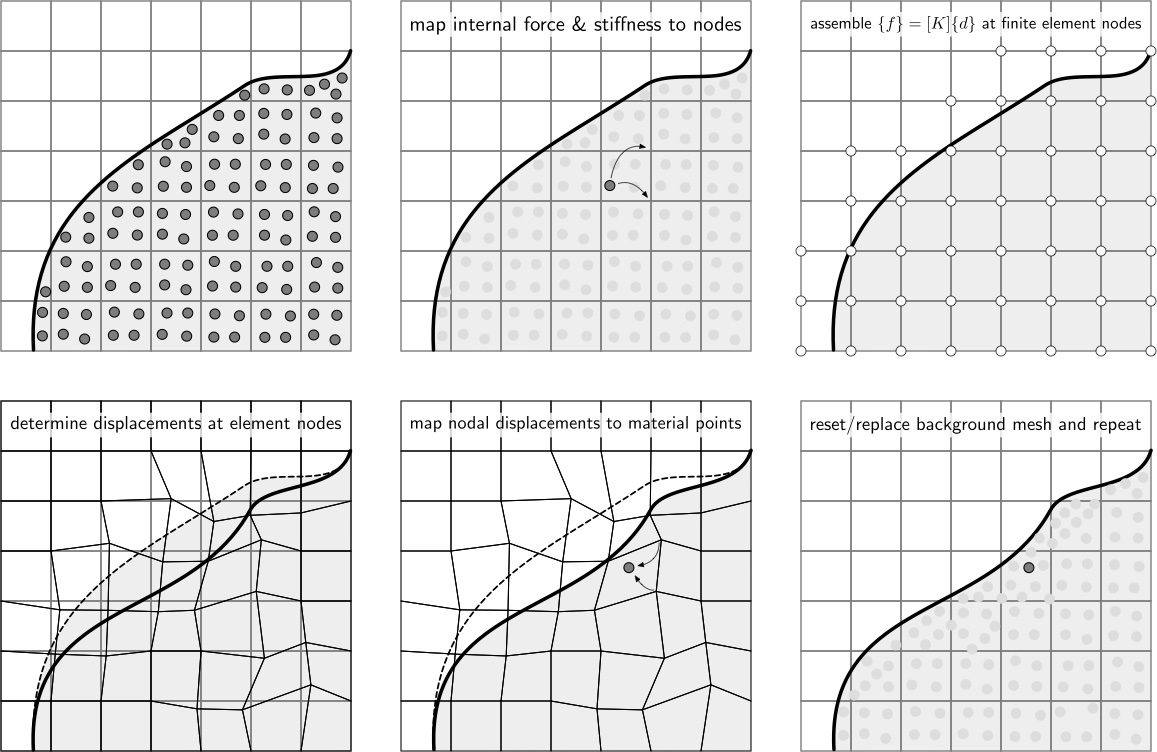Material Point Method
Numerical approaches based on Lagrangian mechanics, particularly using the finite element method, dominate the analysis of solid mechanics problems. However there are issues with mesh-based Lagrangian approaches for problems involving very large deformation in that the discretisation used to analyse the physical problem becomes distorted leading to inaccurate results and, in extreme cases, eventual breakdown of the numerics due to element inversion.
The Material Point Method (MPM) is an alternative to pure Lagrangian approaches and is well suited to problems involving very large deformations. The method was developed in the 1990’s by Sulsky et al. [1] as a solid mechanics extension to the FLuid Implicit Particle (FLIP) method [2] which itself was developed from the Particle-In-Cell (PIC) method [3]. In the material point method, equilibrium computations take place on a background grid but the calculations are based on information (mass, volume, stress, state variables, etc.) held at material points that are convected through the background grid as the material deforms. This allows computations to take place on an undistorted background mesh (structured or unstructured) whilst modelling problems involving very large deformations. One way to summarise the material point method is: a finite element method where the integration points (material points) are allowed to move independently of the mesh.
AMPLE, unlike most of the MPM community, adopts an implicit formulation. The key steps in an implicit implementation of the material point method are shown below.

[1] D. Sulsky, Z. Chen, H. Schreyer, A particle method for history-dependent materials, Computer Methods in Applied Mechanics and Engineering 118 (1994) 179–196.
[2] J.U. Brackbill, H.M. Ruppel, FLIP - A method for adaptively zoned, particle-in-cell calculations of fluid flows in two dimensions, Journal of Computational Physics 65 (1986), 314-343.
[3] F. Harlow, The particle-in-cell computing method for fluid dynamics, Methods for Computational Physics 3 (1964).
